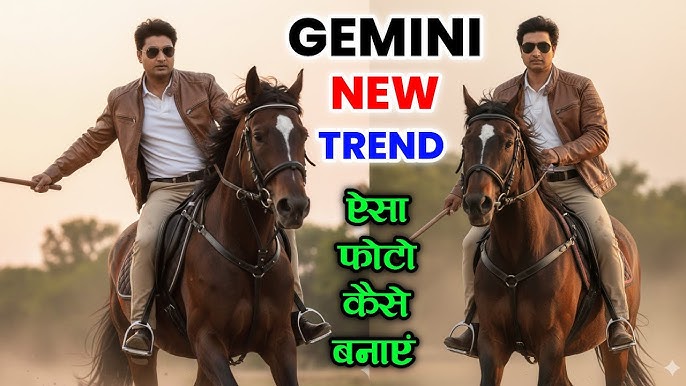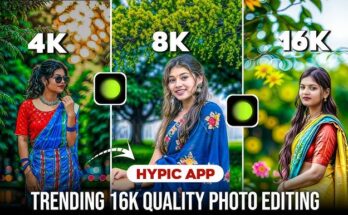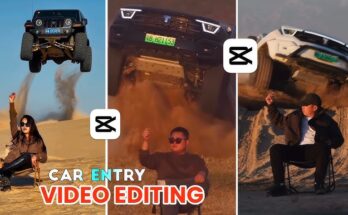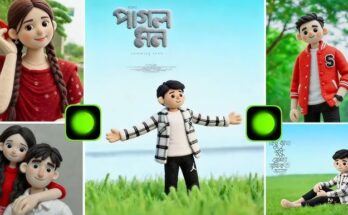Horse riding has long captured human imagination — the elegance, the power, the romanticism of cantering across fields or galloping toward horizons. Now, thanks to advances in generative AI and video synthesis, creators can simulate realistic or stylized horse riding scenes without needing actual horses, cameras, or expensive filming setups. In this guide, you’ll learn how to create AI horse riding videos from the ground up: tools, techniques, workflows, and tips for realism, style, and optimization.
Whether you want to generate short reels for social media, cinematic fantasy scenes, or fun “you riding a horse” clips, this blog will walk you through:
-
The basics of AI video generation
-
Choosing the right tools & platforms
-
Planning & conceptualizing your horse riding scene
-
Creating key assets (images, animations, prompts)
-
Generating video (text-to-video, image-to-video, hybrid)
-
Editing, compositing, and enhancements
-
Realism, motion, and physics constraints
-
Audio, sound, and synchronization
-
Exporting, optimizing, and publishing
-
Ethical, legal, and technical challenges
-
Future trends & closing thoughts
Let’s saddle up!
1. Understanding the Landscape: AI Video Generation
Before diving into creating horse riding scenes, it’s important to understand what AI video generation is, and what its current capabilities and limitations are.
What is AI video generation?
AI video generation refers to the process where models synthesize video sequences (frames over time, often with motion) based on input prompts such as text, images, or combinations thereof. The generated output may include motion, simulated camera movement, lighting, and sometimes audio.
Recent advances in models such as Veo 3 (by Google) allow for native audio + video generation from text prompts. Gemini+1 OpenAI’s Sora (a text-to-video model) also supports prompt-based video generation up to a certain length. OpenAI+1
Types of AI video generation workflows
There are several primary workflows you might use:
-
Text-to-video: You write a prompt (“A knight rides a white horse galloping across a mountain pass at sunset”) and let the AI generate a video sequence accordingly.
-
Image-to-video: Starting from a still image (e.g. a photo or digital art), animate or “bring to life” the image into motion.
-
Hybrid / mixed input: Combine generated images, hand-drawn frames, or reference videos with AI assistance.
-
Keyframe / interpolation-based: Use manually created keyframes (or 3D renders) and let the AI fill in intermediate frames.
Each technique has pros, cons, and ideal use cases.
Current strengths and limitations
Strengths:
-
Rapid prototyping of scenes without needing live filming.
-
Ability to iterate through variants quickly.
-
Creative freedom to imagine impossible or fantasy scenarios (e.g. riding dragons).
-
Useful for short clips, social media reels, conceptual art, or VFX inserts.
Limitations (in 2025):
-
Temporal consistency: objects may flicker or distort across frames.
-
Anatomical or physical errors: limbs may warp, horses may have incorrect joints, unnatural motion.
-
Limited control over camera movement and complex choreography.
-
Audio generation is improving but often simplistic (ambient sounds or basic voice).
-
Output lengths are often short (a few seconds to ~30 seconds) in many consumer tools.
-
Watermarking or “AI artifact” detection may limit commercial use.
Understanding these constraints helps you plan your project more realistically.
2. Selecting Tools & Platforms for AI Horse Riding Videos
A key step is choosing the right tools and platforms to match your vision, budget, and skill level. Below is a breakdown of tools and criteria.
Popular AI video generation tools (2025)
Here are a few tools and platforms you should know about:
-
Google Veo 3: A state-of-the-art text-to-video model with native audio. Gemini+1
-
OpenAI Sora: Supports text-driven video generation (with certain usage controls). OpenAI+1
-
Adobe Firefly: Offers AI video generation features (text-to-video) integrated into Adobe’s creative ecosystem. Adobe
-
DeepAI Video Generator: Allows text-to-video or image-to-video generation. DeepAI
-
Invideo AI: More of a user-friendly tool with generative features, script writing, visuals, and editing. Invideo
-
Media.io: Specializes in fun effects like AI horse riding filter (e.g. mapping a face onto a rider). Media.io
-
Kling AI / Runway / others: These tools provide advanced generative video capabilities; seen in community experiments for animating riders. MASV+2Reddit+2
When choosing, consider:
-
Input modalities supported (text, image, video)
-
Output duration and resolution
-
Control over motion, camera, and editing
-
Cost, quotas, or token-based pricing
-
Ease of integration with your existing tooling (e.g. video editor or compositing pipeline)
-
Export options, watermarking, and license terms
For horse riding scenes, you’ll often combine more than one tool: e.g. generate a base clip in Veo or Sora, then refine in a video editor or compositing tool.
Tool comparison: example
Zapier’s roundup of the best tools highlights Veo, Sora, Runway, and Invideo as strong options for generative video workflows. Zapier MASSIVE also compares 10 AI video tools with a test prompt. MASV
Remember: the best tool depends on your project’s complexity and your comfort with editing / compositing.
3. Planning & Pre-Production: Visualizing Your Horse Riding Scene
Before you start generating, planning is essential. Visualize what you want, define your constraints, and prepare reference materials.
Define your concept & story
Ask yourself:
-
Who is riding? (a human, fantasy character, silhouette, faceless rider)
-
What kind of horse? (stallion, mare, fantasy creature, mechanical)
-
Where is the setting? (forest trail, desert, mountain, futuristic city)
-
What is the camera angle? (wide shot, tracking shot, side view, low angle)
-
How long is the sequence? (5 s, 15 s, 30 s)
-
How dynamic is the motion? (galloping, trotting, slowing down, turning)
-
What are your lighting and mood goals? (sunset glow, moody dusk, high noon)
Sketch a storyboard (even rough) or write a prompt sequence with shot breakdowns.
Collect reference materials & assets
Gather:
-
Horse and rider reference photos from various angles
-
Videos of real horse motion (especially gait transitions)
-
Silhouettes, anatomy guides, and motion studies
-
Environmental references (terrain, lighting, vegetation, sky)
-
Music or ambient sound references
These references will help you refine prompts and guide edits.
Break down animation requirements
List out:
-
Horse leg motion frames and timing
-
Rider-body posture and movements
-
Camera movement (e.g. dolly, pan, zoom)
-
Secondary motion: mane, tail, dust, bounce
-
Lighting changes (if dynamic)
-
Environmental interactions (e.g. grass bending, shadows)
By identifying these components early, you can ensure your prompts or compositing cover them.
4. Crafting Inputs: Prompts, Images, and Keyframes
Now, you must prepare the actual inputs that will feed your AI pipeline: prompts, images, rough keyframes, etc.
Prompt engineering fundamentals
Writing effective prompts is critical. Tips:
-
Be specific and descriptive: “A knight in blue cloak riding a black stallion galloping across a misty meadow at dawn.”
-
Include motion cues: “gallop,” “trotting,” “camera pans from right to left,” “slow motion,” “wide angle.”
-
Specify style: “photorealistic,” “cinematic,” “fantasy,” “painterly,” “CGI-like.”
-
Mention environmental details: “sunrise, soft golden light, mist, particles.”
-
Use sequential prompts for complex scenes (e.g. prompt for start, mid, end segments).
-
Iterate: you may need to refine your prompt over multiple attempts.
Preparing images / keyframes
If using image-to-video or hybrid workflows:
-
Create or pick a strong keyframe image representing pose or composition.
-
Use graphic tools or 3D software to approximate pose if needed.
-
You can generate multiple variations of the same scene to interpolate between.
-
Save mask layers (e.g. horse, rider, background) separately if planning compositing.
Generating draft frames / test outputs
Use your chosen tool (e.g. Veo, Sora, DeepAI) to generate short test clips or frames. This helps you:
-
See how the AI interprets your prompt
-
Identify distortions or errors early
-
Adjust prompt phrasing or constraints
-
Test whether adding or removing details improves output quality
Repeat this process until you get a baseline you’re happy with.
5. Generating the Horse Riding Video
This is the core phase: turning prompts and images into an animated video sequence.
Workflow A: Text-to-Video (end-to-end)
-
Input your prompt or prompt sequence into a tool like Veo 3 or Sora.
-
Specify duration, camera style, and any additional constraints.
-
Generate the video output.
-
Review and select the best version.
-
Optionally, run subsequent refinement prompts or transitions.
This workflow is the simplest, but offers less fine-grained control.
Workflow B: Image-to-Video Animation
-
Start with one or more key images (e.g. rider on horse in static pose).
-
Use AI or animation tools to animate movement: warp, dissolve, or interpolate frames.
-
Use motion vector-based tools or filters to induce movement.
-
Apply layering (horse legs vs. background) if possible.
This gives you more control over the base composition.
Workflow C: Hybrid / Multi-stage
-
Generate base motion using AI (text or image derived).
-
Import into a video editor or compositing tool (After Effects, Blender, Nuke).
-
Adjust or correct distortions manually (rotomation, masking).
-
Add supplementary layers (dust, motion blur, camera shake).
-
Composite final output.
Many creators prefer this hybrid approach because it balances automation with manual artistry.
Practical example
A creator used Kling + Photoshop + Premiere Pro to generate a scene of themselves riding a horse: they combined AI frames with manual editing to fix artifacts and smooth transitions. YouTube
Likewise, social filters like Media.io’s AI horse riding effect map faces onto riders to generate short clips. Media.io
6. Editing, Compositing & Refinement
After generating a base video, the refinement stage allows you to polish, correct, and enhance.
Frame-by-frame correction
-
Use rotoscoping or masking to fix deformed limbs or odd motion.
-
Blend multiple AI outputs to reduce flicker or frame jumps.
-
Use motion smoothing or optical flow tools to interpolate stable movement.
Layering & effects
-
Add dust, motion blur, or particles to amplify speed.
-
Composite environmental overlays (e.g. grasses, leaves, shadows).
-
Add ambient lighting or lens flares for cinematic touches.
-
Introduce depth-of-field or focus pulls to guide the eye.
Camera motion and stabilization
-
If your AI output lacks consistent camera motion, you can “fake” dolly or pan via zoom + shift in post.
-
Use motion tracking to anchor overlays.
-
Add gentle camera shake or jitter based on scene intensity.
Color grading & stylization
-
Match color tones across frames for consistency.
-
Use LUTs or cinematic color grading to get the mood.
-
Blend in vignetting, contrast, or film grain for a stylized finish.
Transitions & cuts
-
Depending on your final video, you may want to cut between different AI-generated scenes (e.g. close-up on horse face, side profile gallop, wide shot).
-
Use cross-dissolves or cinematic cuts to smooth transitions.
By combining AI output with traditional editing, you get better control and quality.
7. Achieving Realism: Motion, Physics & Anatomy
One of the biggest challenges in AI-generated horse riding videos is getting motion and anatomy correct.
Understanding horse gaits and motion
Horse movement has distinct gaits: walk, trot, canter, gallop. Each has different leg phases, timing, and posture changes. Use reference videos to internalize:
-
Leg extension and contraction
-
Body and neck pitch during stride
-
Rider’s bobbing or body movement
-
Mane and tail motion
In your prompts or edits, emphasize “natural gait” or “realistic horse gallop” to nudge the AI.
Constraints and checks
-
Ensure the rider’s legs align with stirrups and horse contours.
-
Watch for unnatural bending or stretching of anatomy.
-
Look for foot clipping or penetrating through bodies.
-
Check consistency across frames: avoid sudden shifts in proportions.
Adding secondary motion
-
Let the mane, tail, cloth, or hair respond naturally (e.g. trailing behind).
-
Add minor bouncing or vertical displacement to simulate motion jolts.
-
Use dust or ground interaction to anchor speed.
Physics & environment interaction
-
Objects (grass, dust, ground) should respond to footfalls.
-
Shadows should align with lighting across frames.
-
If camera moves, parallax and depth should shift realistically.
You may need manual correction or layered overlays to fix AI inconsistencies.
8. Sound Design, Audio & Musical Scoring
No video is complete without sound. In horse riding scenes, audio plays a critical role in immersion.
Audio elements to include
-
Horse hoof beats (galloping, trotting)
-
Breathing or light vocalizations
-
Rider sounds (breathing, clothing rustle)
-
Ambient environment (wind, distant birds, insects)
-
Music or thematic score
Sourcing sound assets
-
Use free or paid sound libraries (e.g. Freesound, Splice, AudioJungle)
-
Record real horse sounds if possible — they add authenticity
-
Use SFX layering (i.e. combine multiple hoof clips for variation)
Audio synchronization
-
Time hoof beats to match leg motion in video frames
-
Add subtle Doppler or panning if the camera moves
-
Fade in ambient layers or music depending on shot transitions
-
Use crossfades to avoid abrupt audio cuts
Optional: AI-generated audio / voiceover
Some advanced AI tools can generate simple ambient audio or voiceovers (e.g. Veo’s audio support) Gemini but their realism may not match dedicated sound design. It’s best used sparingly or as temp audio.
9. Exporting, Optimizing & Publishing
Once your scene is polished, the final step is exporting and distributing it.
Output settings & format
-
Export in a high-quality format (e.g. H.264 / MP4, ProRes, or HEVC)
-
Use resolution and frame rate suited to your platform (e.g. 1080p @ 24/30 fps or 4K)
-
Consider bitrate settings to preserve detail
-
If exporting short clips for social media, consider vertical / square formats (9:16, 1:1)
Compression and size tradeoffs
-
Use two-pass encoding to balance quality and file size
-
Avoid over-compressing, especially in textured areas (grass, fur)
-
Preview on target devices (phone, PC) to ensure quality holds up
Metadata, captions & SEO
-
Add descriptive titles, captions, and tags (e.g. “AI Horse Riding Video,” “Fantasy Equestrian Clip”)
-
Use alt text or descriptions if embedding online
-
Consider subtitles or on-screen labels to contextualize
Publishing strategies
-
Share teasers or short clips on Instagram Reels, TikTok, or YouTube Shorts
-
Post behind-the-scenes or “making-of” breakdowns to attract interest
-
Embed your video in your blog post or portfolio
-
Use relevant keywords (horse riding, AI video, generative art) to improve discoverability
10. Ethical, Legal & Technical Considerations
When creating AI-generated content with humans, animals, or realistic scenes, there are responsibilities to consider.
Ethical concerns
-
Deepfake & identity misuse: Be cautious when placing real people (famous or private) on AI-generated riding scenes.
-
Consent: Always have rights to use likenesses.
-
Misrepresentation: Mark content as AI-generated to maintain transparency.
-
Copyright / training data: Some generative models may rely on copyrighted content in training data — be mindful of commercial use constraints.
Legal & licensing
-
Check the terms of your AI tool: usage, distribution, commercial rights, watermark policies, etc.
-
Avoid infringing on existing video, image, or audio assets unless licensed.
-
Add disclaimers (“This is AI-generated”) where appropriate.
Technical constraints to watch
-
AI outputs may produce visual artifacts (halos, stretching, distortions)
-
Temporal consistency (flickering) across frames
-
Hardware and memory limits when working with high resolution
-
Tool quotas or usage limits (especially in free or subscription models)
By being aware of these, you can mitigate risks and create responsibly.
11. Future Trends & Advanced Tips
Let’s look ahead and some pro-level tips to take your AI horse riding videos further.
Future directions in AI video
-
Longer, high-fidelity video: New models like MAGI-1 push toward longer, consistent outputs. arXiv
-
Better physics modeling: Future systems may better simulate real-world physics, muscle dynamics, and fluid motion.
-
3D-aware generation: Integrating 3D geometry, lighting, and scene understanding.
-
Real-time or interactive generation: Soon users may be able to walk through or control scenes dynamically.
-
Improved audio + speech generation: More realistic ambient audio, dialogues, and environment-reactive sound.
Advanced tips
-
Use prompt chaining: break long scenes into multiple prompts (start, mid, end) and blend them.
-
Use masking or control maps: guide the AI on motion paths and regions of interest.
-
Experiment with style transfer or texture overlays to unify visuals.
-
Combine with 3D rendering: generate a rough 3D pass then enhance via AI.
-
For long sequences, render in segments and splice with crossfades to mask inconsistencies.
-
Use temporal smoothing or optical flow filters to reduce flicker.
-
Share intermediate “failed” outputs to gather feedback — often reveals problem areas.
Sample Workflow: Creating a 15-Second AI Horse Riding Clip
Let me walk you through a sample end-to-end workflow to illustrate how the above steps come together.
-
Concept: A lone rider on a chestnut horse gallops across a misty meadow at dawn; camera tracks from side to front.
-
References: Collect footage of horse galloping, dawn lighting, misty meadows.
-
Prompt design:
-
Prompt A (0–5 s): “Chestnut horse galloping across dew-covered meadow at dawn, low angle side view, soft golden light, gentle camera pan.”
-
Prompt B (5–10 s): “Camera moves ahead to face rider galloping toward lens, horse mane flowing, mist swirling.”
-
Prompt C (10–15 s): “Wide shot from above, rider silhouetted against sunrise, slow fade-out.”
-
-
Generate with Veo or Sora: Use prompt A, B, C to generate three clips.
-
Select best takes, discard distorted versions.
-
Import into editing / compositing:
-
Trim and sequence the 3 clips.
-
Use crossfades or wipes between transitions.
-
Overlay dust particles and ground interaction effects.
-
Add camera shake or shake maps subtly.
-
-
Sound and music:
-
Find a hoofbeat loop collection and match to motion.
-
Add ambient dawn birds, wind ambient.
-
Add a soft cinematic score underlay.
-
-
Color grade:
-
Use warm tone LUTs.
-
Add contrast, boost highlights on the horse.
-
Add vignette or radial gradient fade.
-
-
Export final:
-
Render at 1080p 24 fps, 2-pass encoding.
-
Export a vertical-cropped version for Reels / Shorts.
-
You now have a polished 15-second AI horse riding video ready for sharing.
Prompt For Image:
Young man with a beard and mustache, wearing a traditional white shalwar kameez, sitting on a brown horse, looking directly at the camera, gently petting the horse’s head. The horse has a blue saddle with yellow and green tassels on the bridle. Rural earthy-toned background with dry grass, golden-leaved trees, and a palm tree in the distance. Soft natural lighting, high-quality professional photograph style.
Tips, Common Pitfalls & Troubleshooting
Here are tips and how to handle common issues:
-
Artifact / flicker: Blend two generated versions, use temporal smoothing or optical flow interpolation.
-
Weird anatomy: Limit prompt complexity; ask “natural anatomy, no distortion”; fix in editing.
-
Camera inconsistency: Use stabilizers or fake movement in post rather than pushing AI to do it perfectly.
-
Horse and rider misalignment: Use masks or rotoscope manually to correct limb intersections.
-
Low resolution / blur: Use super-resolution upscaling or re-render at higher resolution if tool supports.
-
Audio sync issues: Manually align hoof beats, or slow audio to match.
-
Runtime limits: Split into segments if AI tool limits length.
-
Watermarks / licensing: Use paid tiers where watermark removal is allowed; check commercial rights.
Prompt For Video :
A young man in a white shalwar kameez with a beard rides a brown horse decorated with a blue saddle and yellow-green tassels, moving forward through a rural landscape of dry grass and golden trees. He looks at the camera while the horse walks gracefully. Soft natural sunlight, cinematic video style.
SEO & Marketing Tips for Your Blog / Video
To ensure visibility and reach, here are SEO-friendly and promotion tips:
-
Use target keywords: e.g. “AI horse riding video,” “create horseback AI video,” “generative horse riding clip.”
-
Structure your post with headings (H2, H3) and include terms naturally.
-
Include sample video embeds or screenshots to increase engagement.
-
Add an FAQ section (e.g. “Can I monetize AI horse riding videos?”).
-
Use internal linking to related posts (e.g. AI art, video generation).
-
Share on social media, AI / generative art communities, YouTube Shorts with teaser clips.
-
Use descriptive, keyword-rich titles and meta descriptions.
-
Encourage comments / feedback — which helps boost SEO through user engagement.
Conclusion
Creating AI horse riding videos is a fascinating intersection of art, technology, and storytelling. While current tools still have limitations, with clever prompt design, hybrid editing workflows, and layered compositing, you can produce compelling and imaginative horse riding scenes.
In this post, we covered:
-
The fundamentals and limitations of AI video generation
-
How to choose and use tools (like Veo, Sora, DeepAI)
-
Planning your scene, prompts, and assets
-
Generating video via text, image, or hybrid workflows
-
Editing, compositing, and sound design
-
Realism, physics, and dealing with artifacts
-
Exporting, publishing, legal/ethical considerations
-
Future trends and advanced tips
Now, go ahead and try creating your own AI horse riding video! Start small (5–10 seconds), iterate, and build your confidence. If you like, I can also help you with prompt templates, example scripts, or tool comparisons tailored to your budget or skill level.
For more Information Visit



